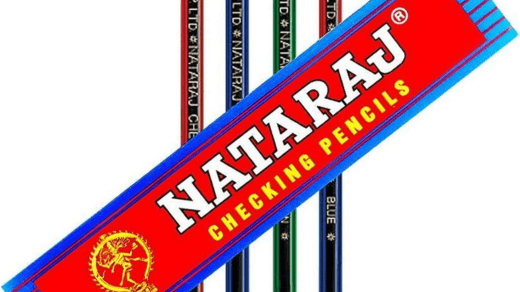Have you ever stopped to ponder the sheer precision and artistry that goes into the creation of something as simple and ubiquitous as a pencil? From its inception as raw materials to the final product sitting on your desk, the intricate process of Pencil Packing Work is a testament to human ingenuity and attention to detail. In this article, we’ll take a fascinating journey through the various stages involved in crafting precision pencils, unraveling the steps that transform raw materials into a tool that has stood the test of time.
The Humble Pencil’s Journey
The journey of a pencil begins far before its arrival on your desk. It’s a journey that involves meticulous craftsmanship, innovation, and a dedication to perfection. As you hold a pencil in your hand, it’s easy to overlook the complex process that brought it to life.
Sourcing Quality Raw Materials
Crafting a high-quality pencil starts with the careful selection of raw materials. The graphite, which forms the core of the pencil, must be of impeccable quality. It’s sourced from mines and then processed to achieve the desired consistency and texture.
Graphite: The Core of Excellence
Graphite is the heart and soul of every pencil. It’s carefully ground and mixed with clay to achieve the perfect balance of darkness and durability. The proportions must be precise, as even a slight deviation can affect the pencil’s performance.
Wood Selection and Preparation
The wood surrounding the graphite core plays a pivotal role in the pencil’s overall quality. Cedar wood is often preferred for its smooth texture and ease of sharpening. The wood is cut, shaped, and polished to create a precise casing for the graphite.
Bonding Graphite and Wood: The Delicate Fusion
Bringing together the graphite core and the wooden casing requires skillful precision. The components are bonded using a combination of heat, pressure, and adhesive. This delicate fusion ensures that the core remains centered and secure within the wood.
Shaping the Pencil: From Rough to Refined
The rough pencil casings undergo a series of shaping processes to achieve their final form. They are turned, smoothed, and cut to the appropriate length. This stage requires careful attention to detail to maintain consistency in size and shape.
Coating for Aesthetic Appeal and Durability
Aesthetic appeal and durability are enhanced through a coating process. The pencil may receive a lacquer or paint coating, adding color and protection. This step also contributes to the pencil’s comfortable feel in hand.
Precision Sharpening: The Final Touch
Before reaching your hands, each pencil undergoes precision sharpening. This step ensures that the graphite core is exposed at the perfect angle for optimal writing or drawing. It’s a testament to the commitment to delivering a product ready for immediate use.
Erasers: Small Yet Essential
Erasers are a vital companion to any pencil. They are attached with precision to the end of the pencil, offering a seamless tool for correcting mistakes. Erasers, too, undergo thorough testing to ensure their effectiveness.
Quality Control: Ensuring Perfection
Pencil manufacturing involves rigorous quality control measures. Each pencil is scrutinized for flaws, imperfections, and performance. This meticulous assessment guarantees that only the finest pencils make their way into the hands of users.
Eco-Friendly Practices in Pencil Manufacturing
In an era of environmental consciousness, pencil manufacturers are adopting eco-friendly practices. Sustainable sourcing, recycling, and reduced waste are becoming integral to the pencil packing process.
The Evolution of Pencil Design
From the simple wooden pencil to innovative mechanical variants, pencil design has evolved over the years. Yet, the core principles of precision and functionality remain constant.
Pencils as a Cultural Icon
Pencils have transcended their utilitarian purpose to become cultural symbols. They are associated with creativity, learning, and self-expression. Pencils have played a significant role in shaping art, literature, and education.
The Role of Technology in Modern Pencil Manufacturing
While traditional craftsmanship remains at the heart of pencil packing, technology has also found its place. Automation, precision machinery, and advanced materials have revolutionized certain aspects of pencil production.
Conclusion: The Endless Artistry Encased in Every Pencil Next time you pick up a pencil, take a moment to appreciate the intricate journey it has undertaken. From the careful selection of materials to the final sharpened tip, the pencil embodies human artistry, innovation, and attention to detail.

